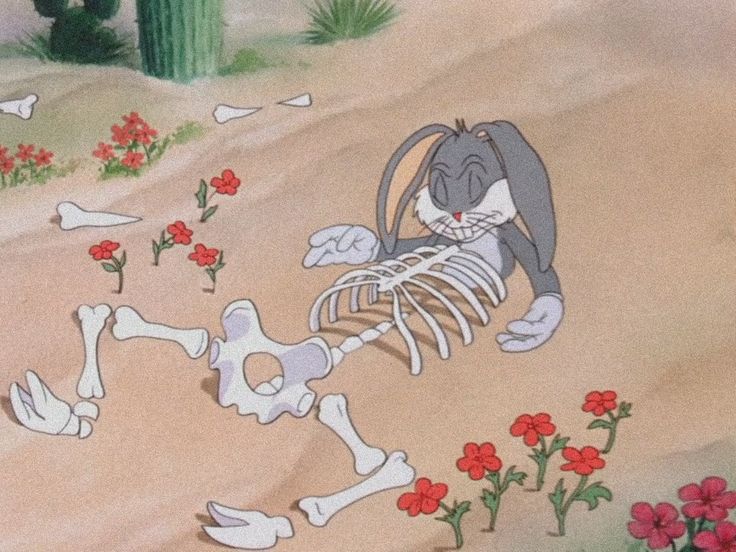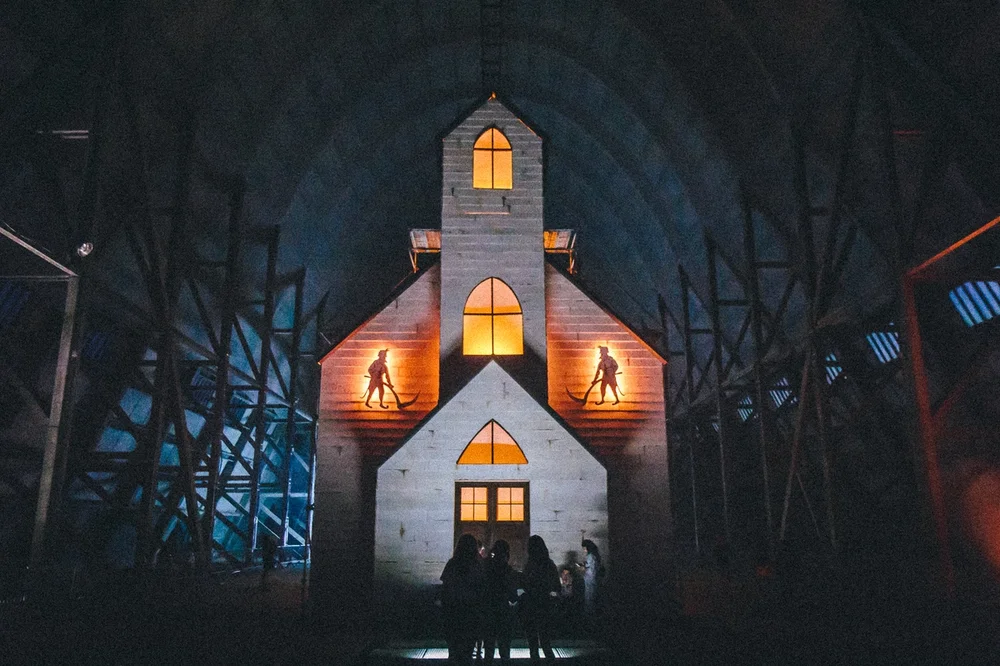
DARK PLACES: PART I - GO TO CHURCH. OR THE DEVIL WILL GET YOU! JUNE 17-18, 2022 @ NORD FICTION, ÉCAUSSEVILLE
Dark Places: Part I - Go To Church. Or The Devil Will Get You! is a site-specific installation created for the Nord Fiction Festival, held in the monumental Ecausseville Airship Hangar (Normandy, France) on June 17–18, 2022.
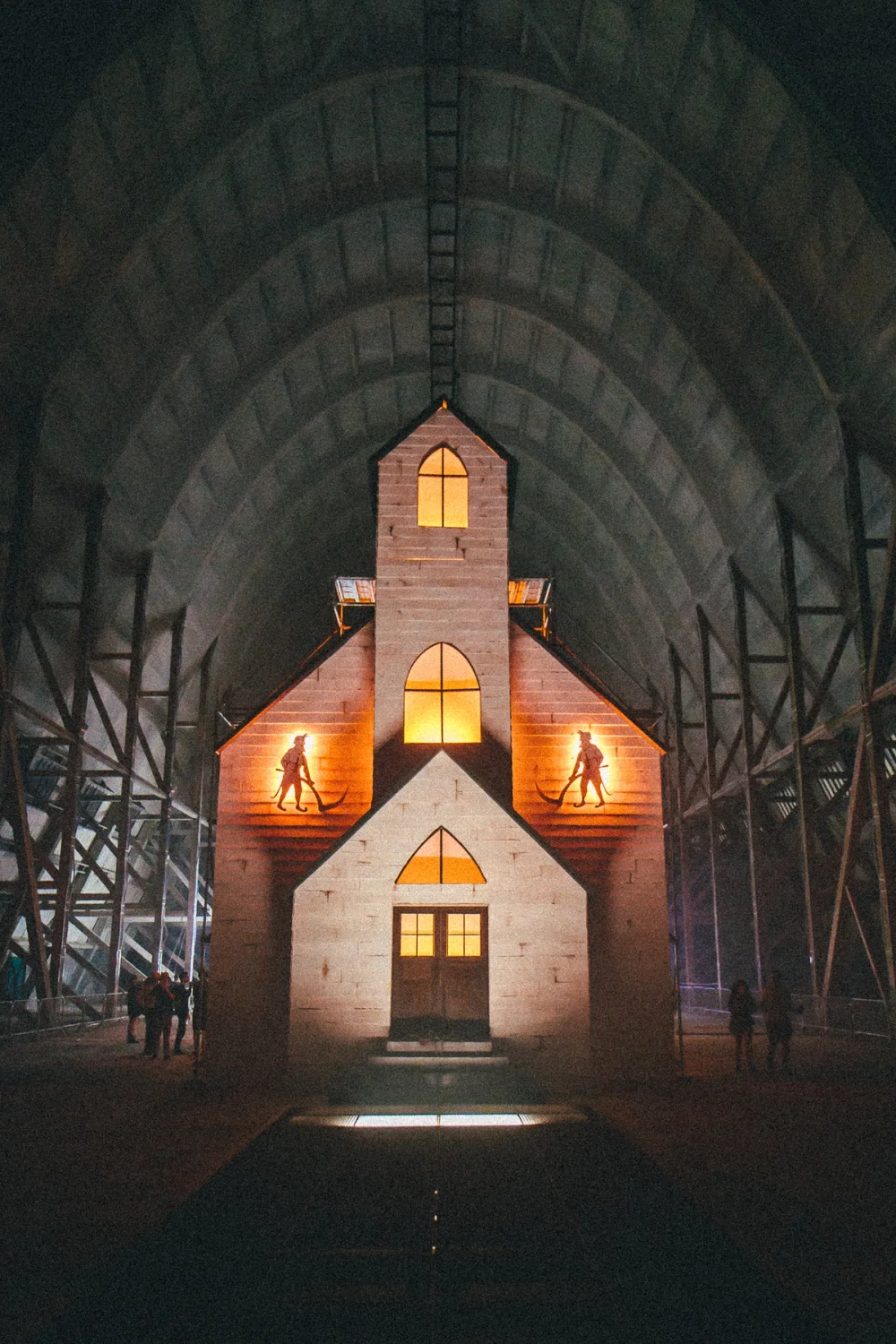
This is the first installment of Dark Places, an ongoing, multi-chapter project by Cécile di Giovanni that explores the architectural, symbolic, and historical transformation of so-called “dark sites” in the United States. Each chapter takes the form of a site-specific installation, shaped by places marked by collective memory, popular narratives, or invisible trauma.

Created in collaboration with the collective Bankal & Decker for the Nord Fiction Festival, the work consisted of a full-scale wooden façade of a church, inspired by Gothic rural architecture from the American South — echoing visual motifs from horror films and constructed as a representation of a cinematic set.
Inspiration
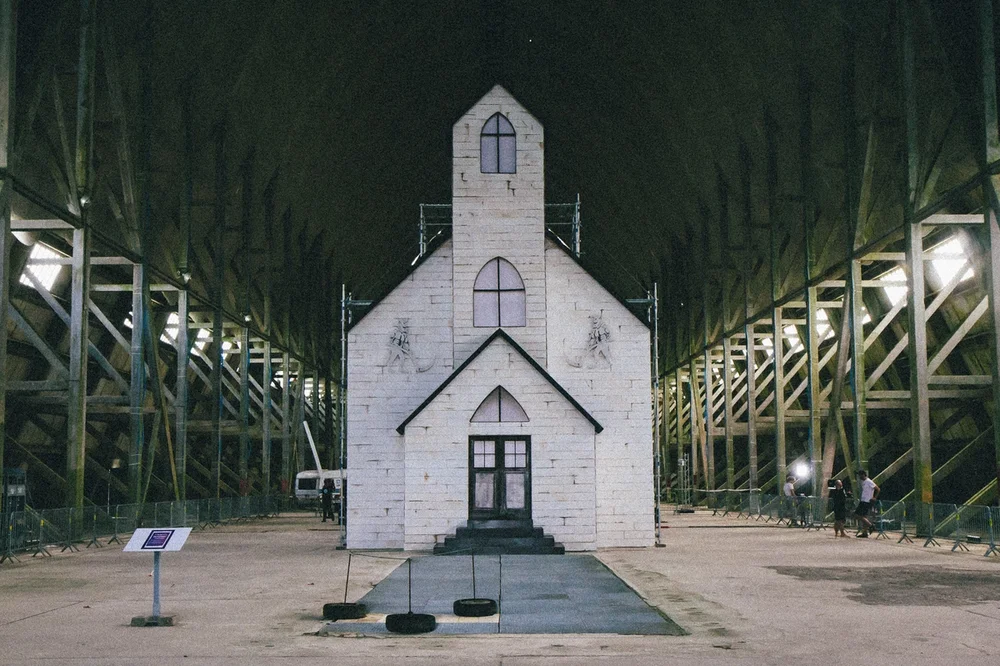
Presented inside the monumental Ecausseville Airship Hangar in Normandy, the installation established a striking visual and symbolic dialogue between some abandoned American churches and the atmospheric landscapes of northern France, as they are roughly envisioned.
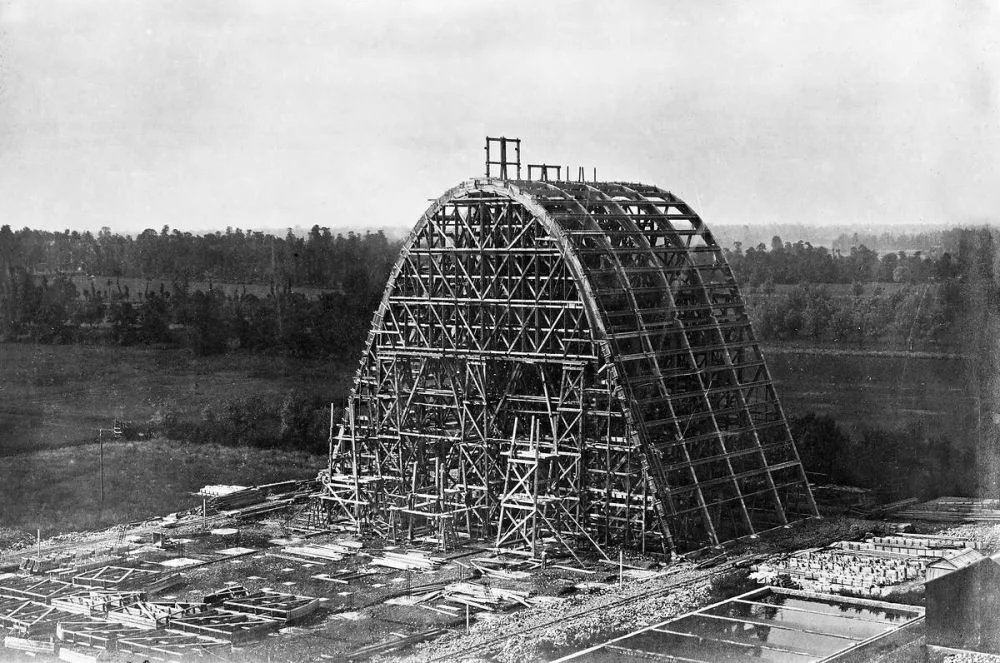
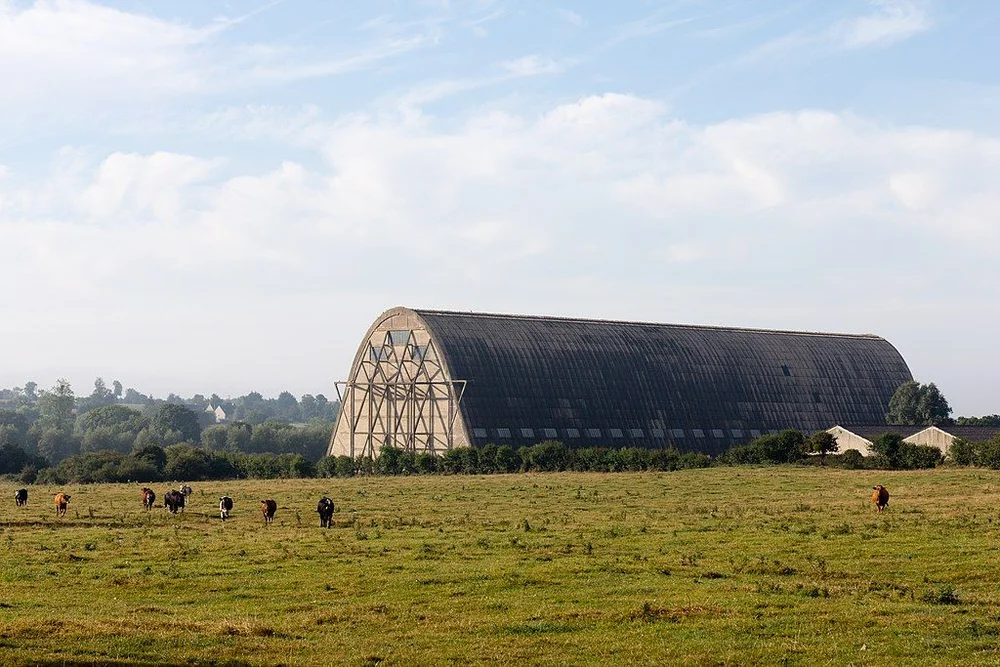
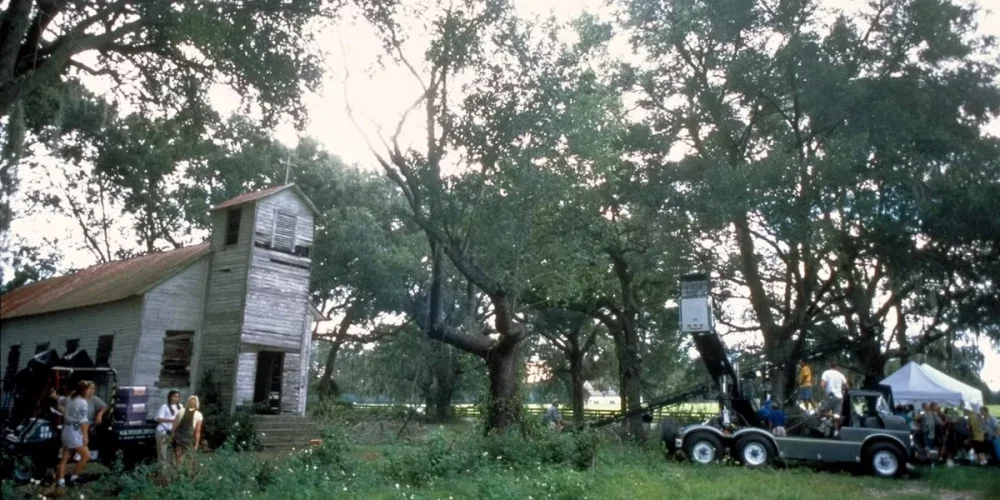
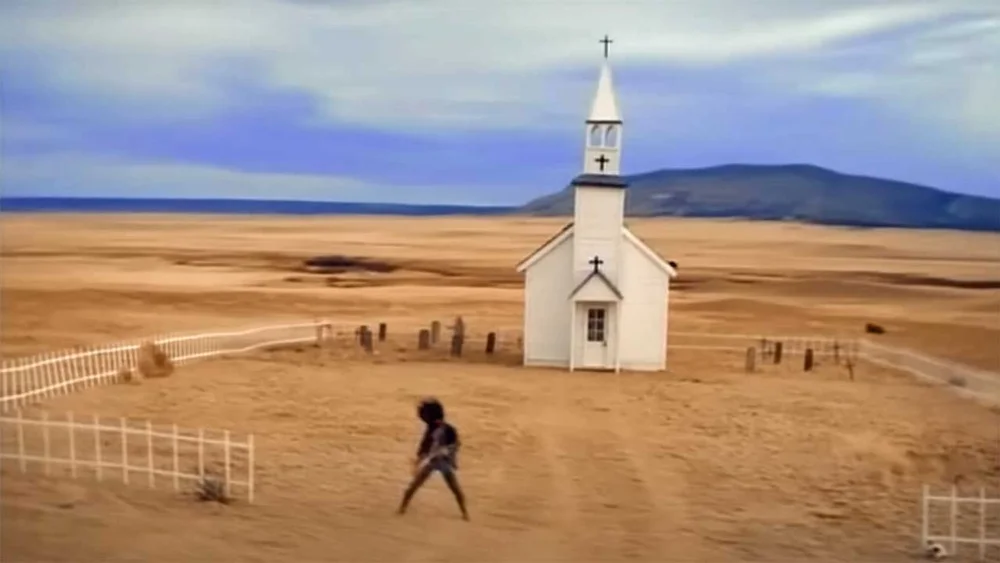
While conducting research, di Giovanni came across the story of a strange roadside sign in Alabama, featuring a devil holding a scythe and commanding passersby to go to church — or risk ending up in hell. It didn’t take much for this image to become a symbol of the project itself. As its meaning continues to shift, the sign — like the rest of the installation — turns into a caricature of itself.
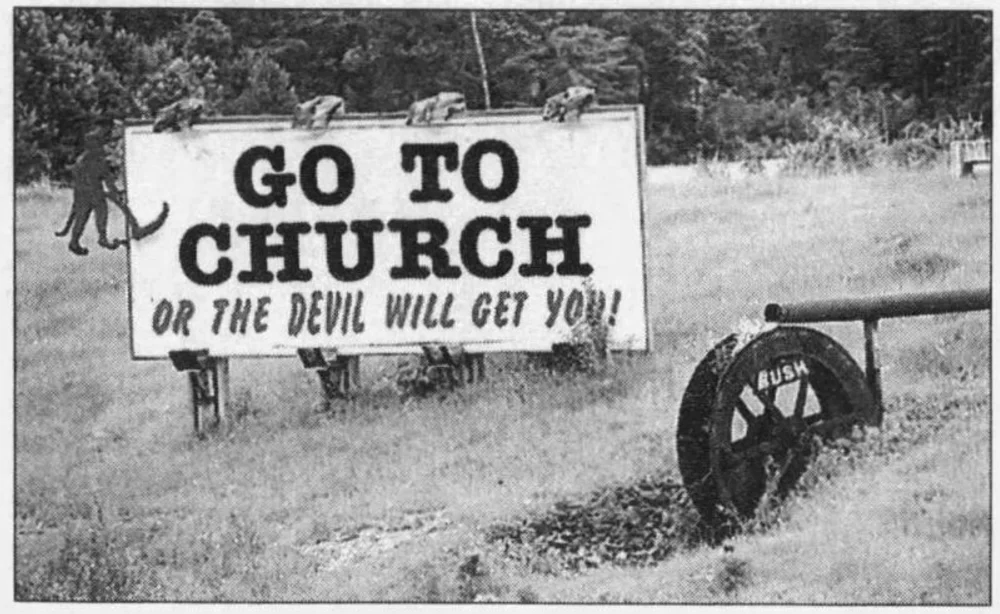
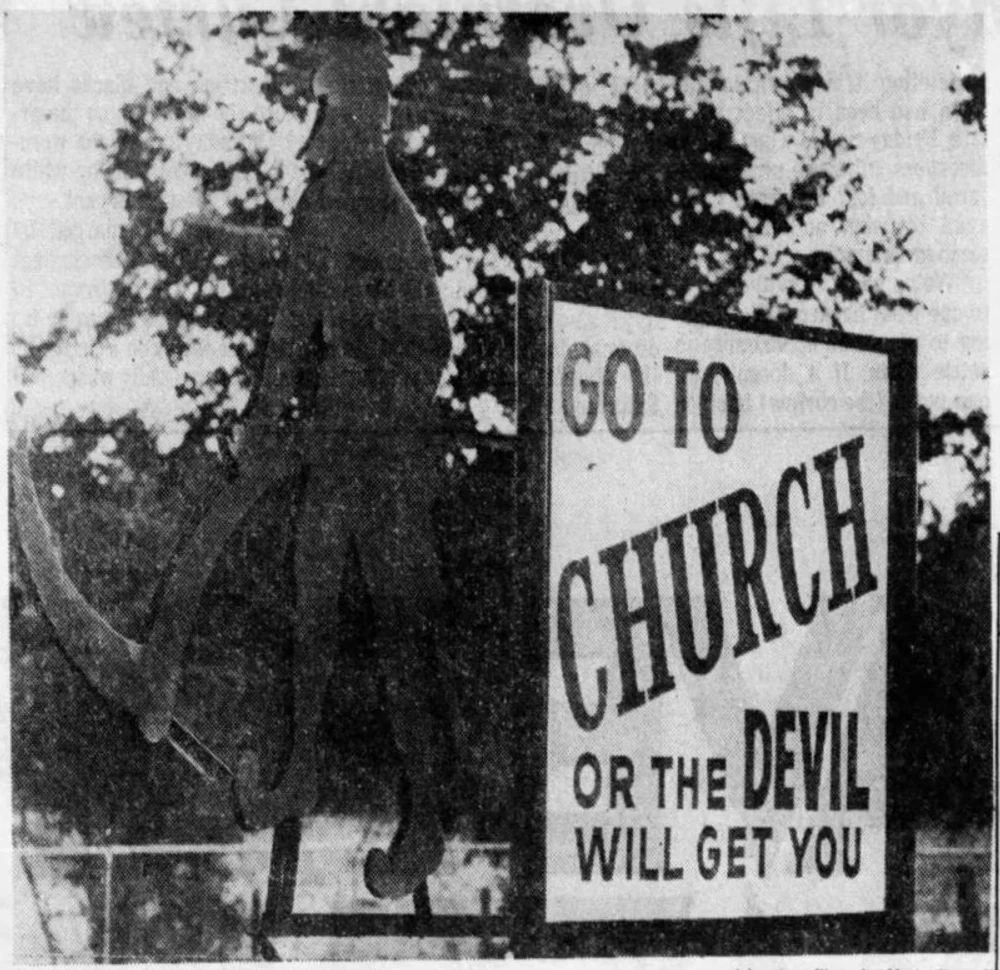
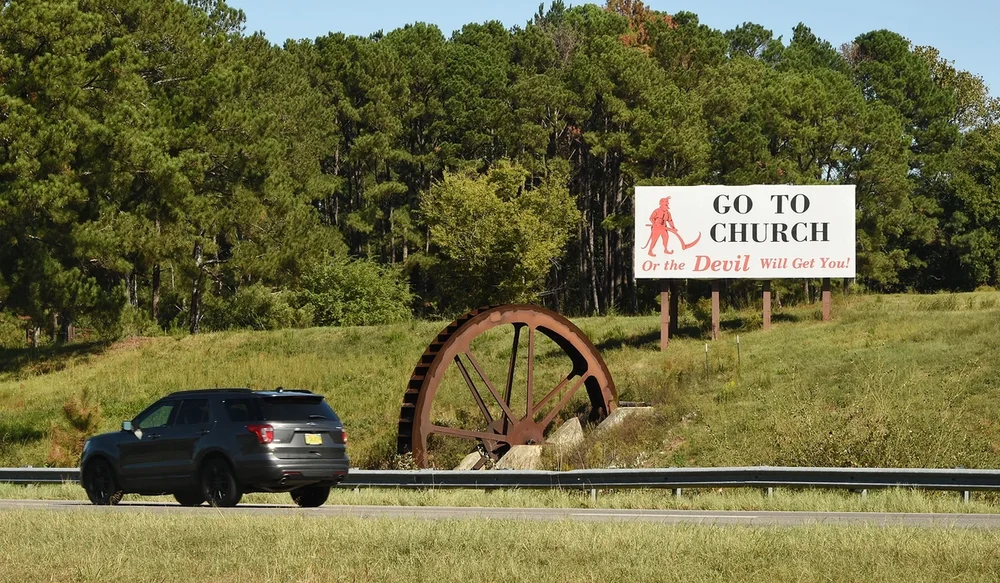

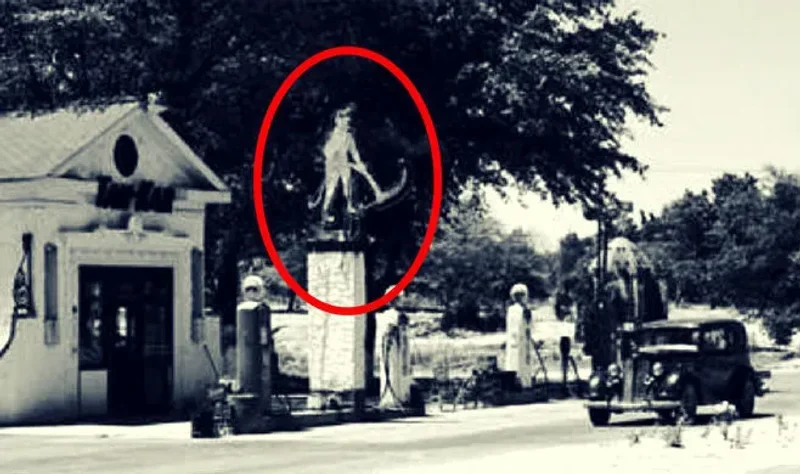
(...) As it turns out, the Devil Sign has a prosaic yet interesting origin. It originated on a tin road sign between the cities of Prattville and Montgomery, when a Montgomery businessman named Mose Stuart opened a franchise of area gas stations in the 1920s. He called his stations, or the first station—it isn’t clear which—the “Red Devil,” and the devil figure festooned the sign above the gas pumps. When Stuart was harassed by the conglomerate Standard Oil, he opened a “recreational park” near his gas station out of spite. He created an artificial lake for this park that was subsequently named Red Devil Lake. The lake was destroyed when, in 1939, a flood caused the dam that maintained it to burst. The dam was never repaired, but the gas station—and the tin devil sign—remained. The gas station eventually closed and was demolished, but the sign stood in place until a man named Newell took it and put it on his “Go to church” sign in 1988.
Process

Initially, the 3D design process helped refine both the aesthetic rendering and the overall scale of the façade, ensuring its dimensions were proportionate to the interior volume of the airship hangar.
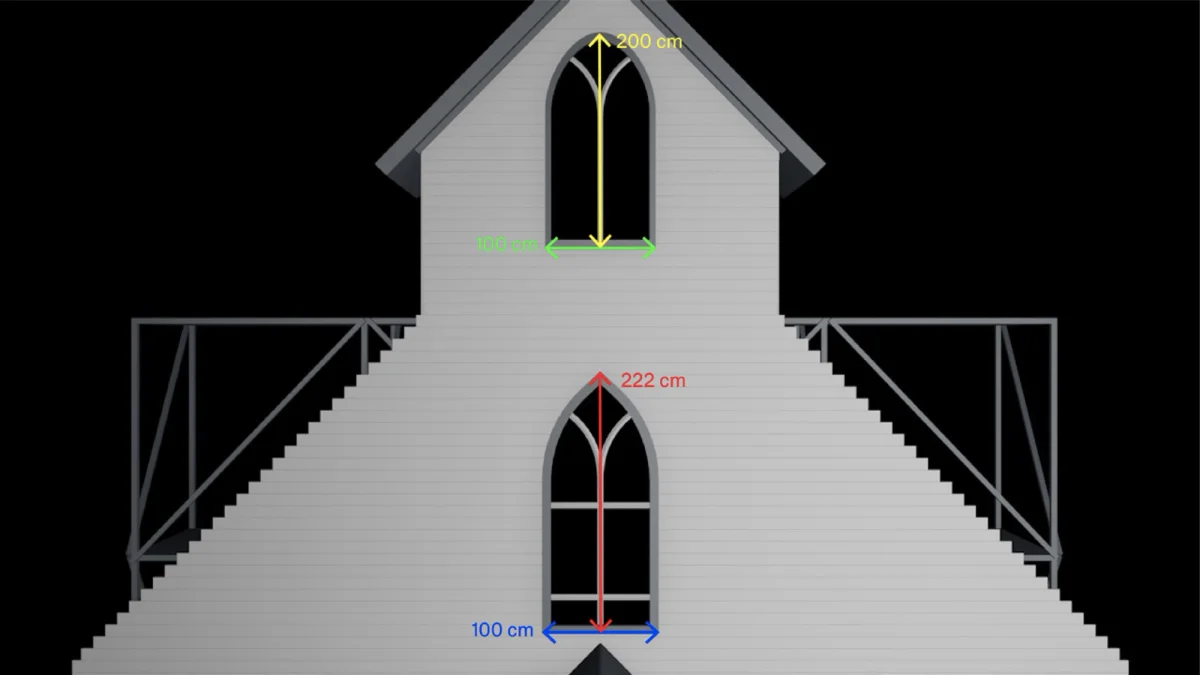

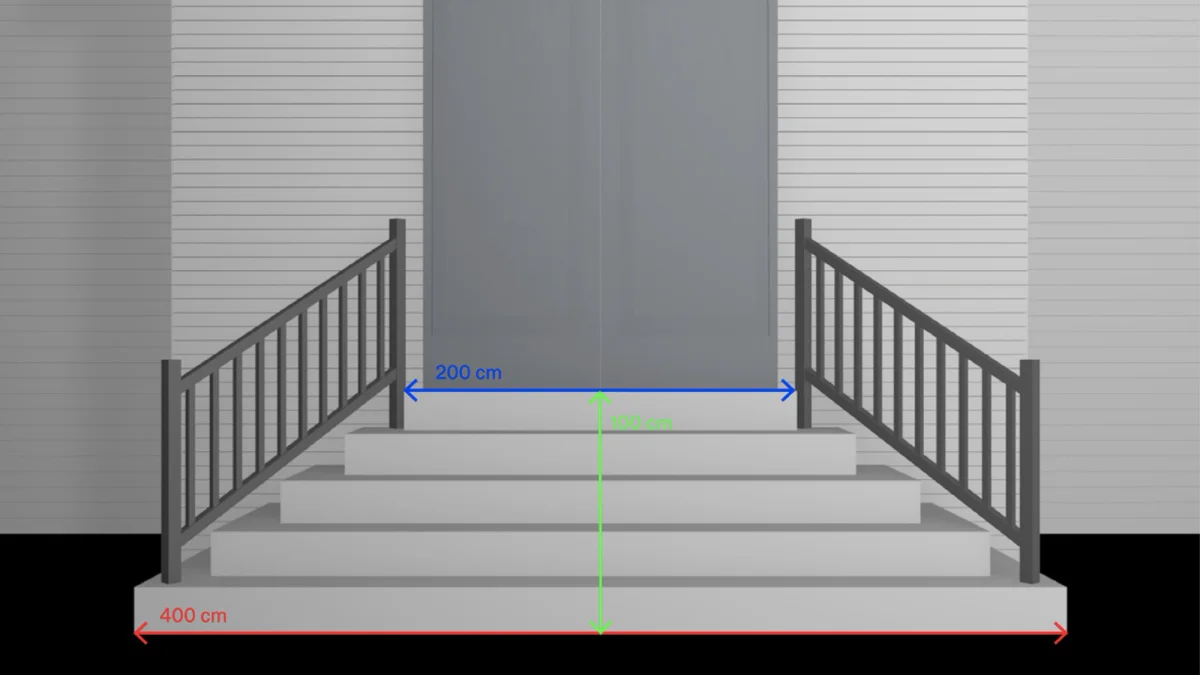

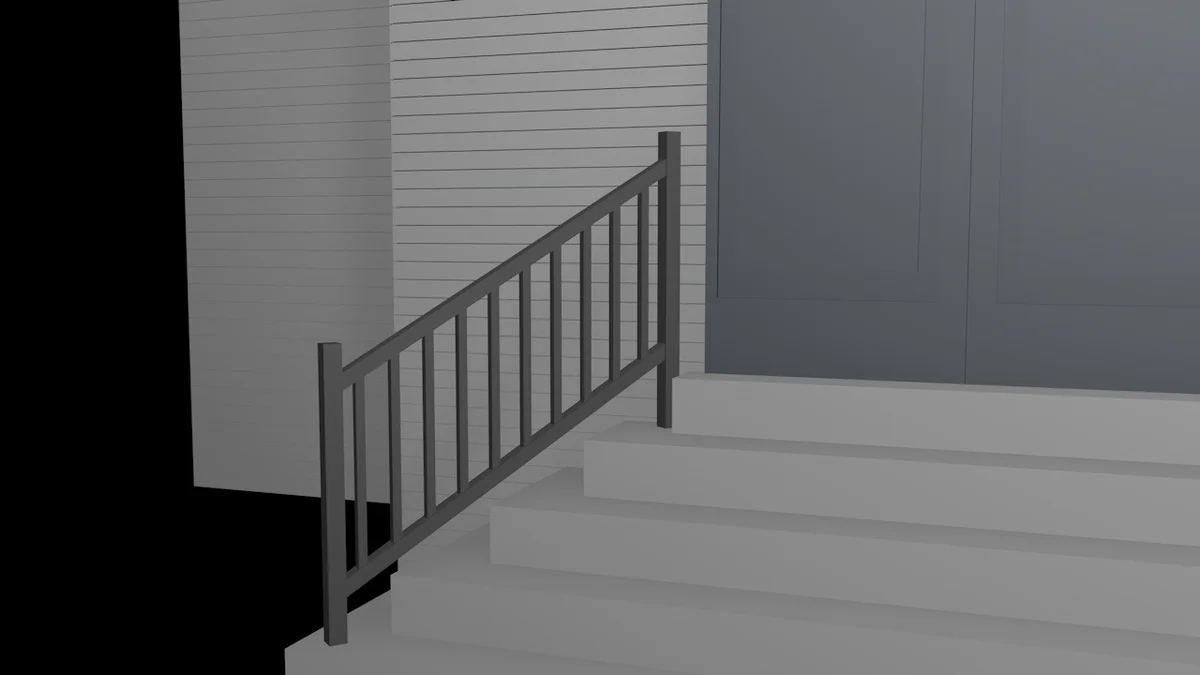
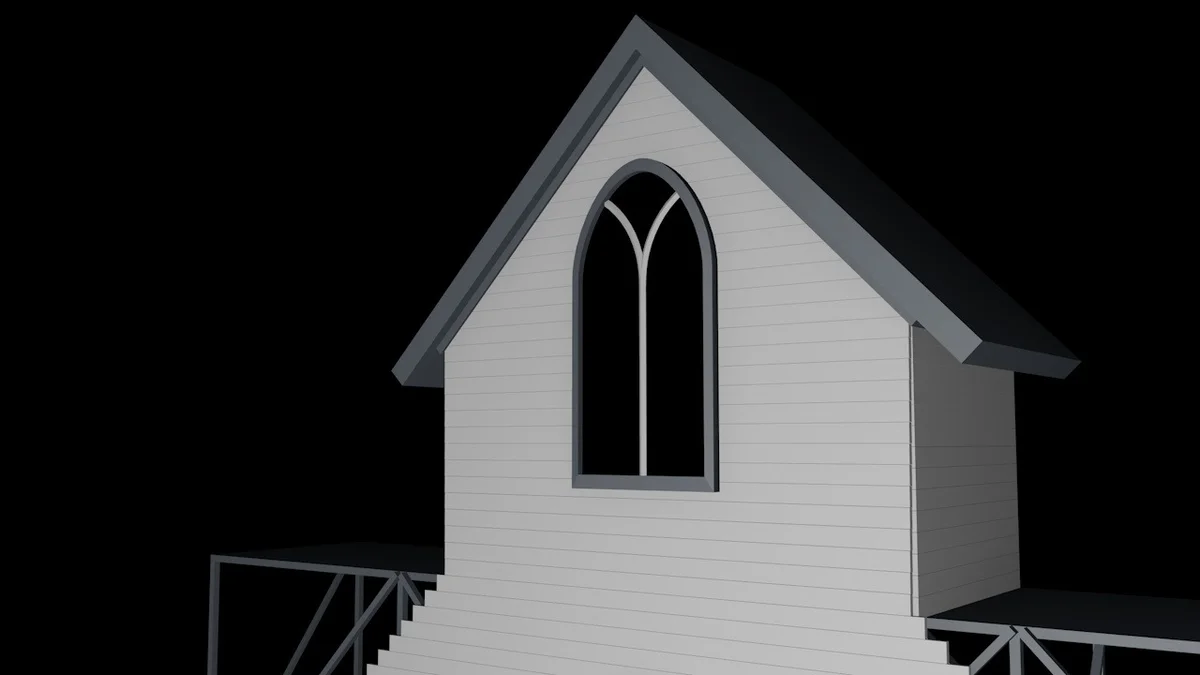
The rendering then had to be adapted to the realities of the site, technical constraints, and available materials — all within the limits of time and budget.
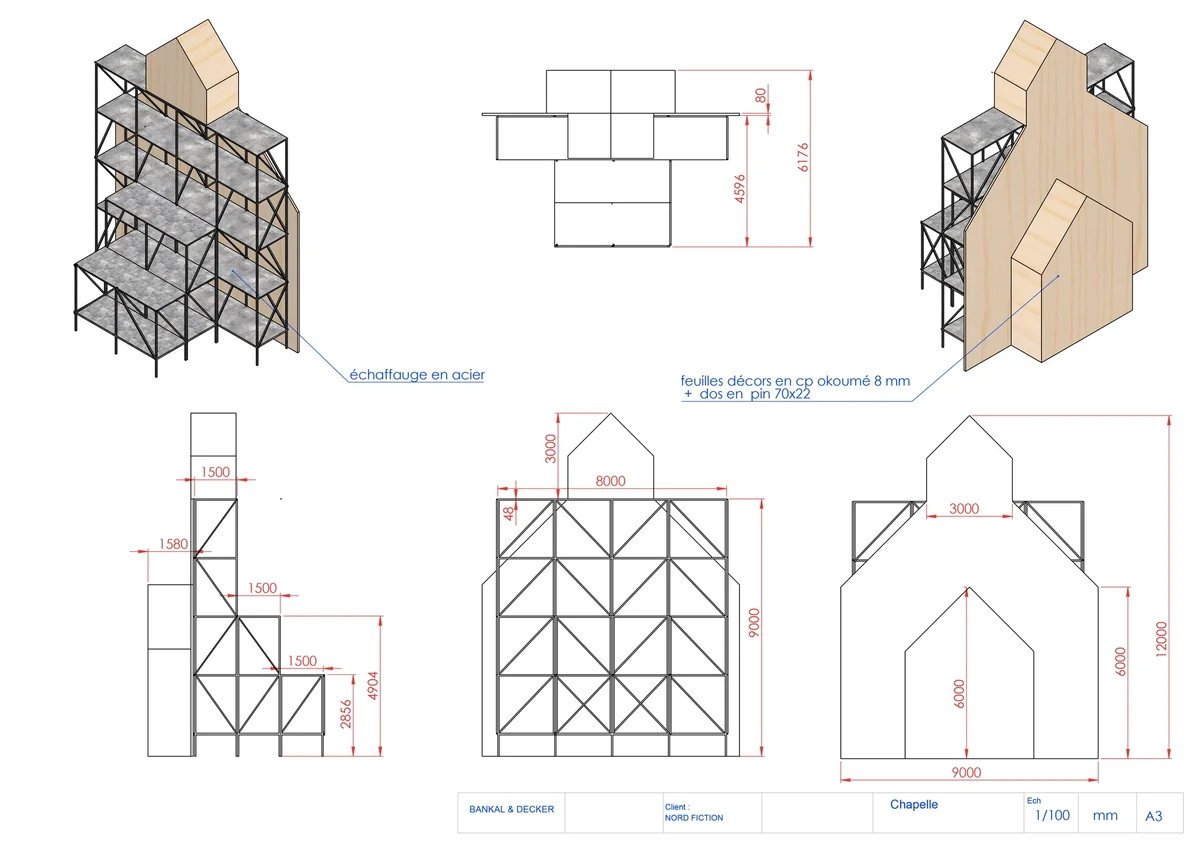
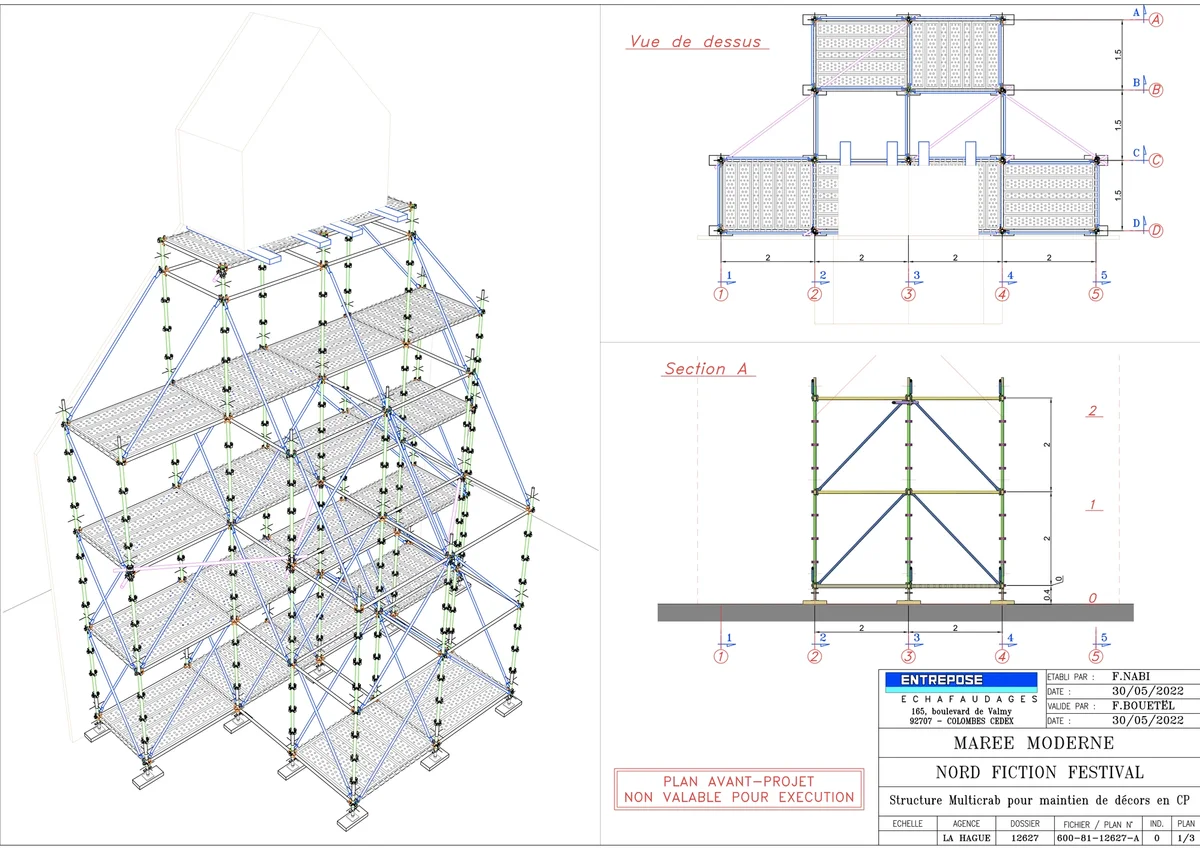
Finally, construction began on June 8 with the Bankal & Decker team (five people plus two interns) and Cécile di Giovanni. The façade was completed in nine days. None of it would have been possible without the support of the festival and the help of the volunteers.
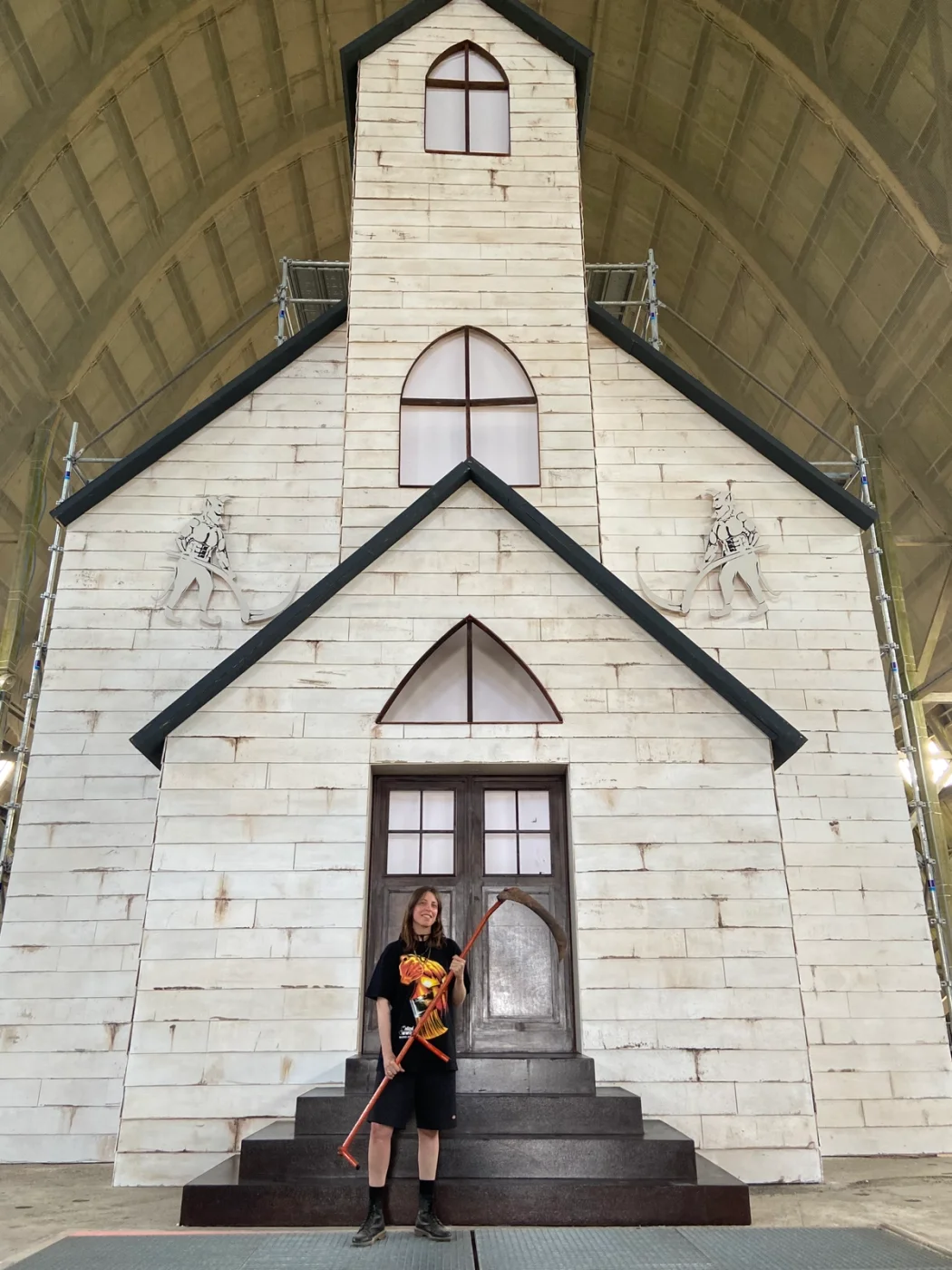
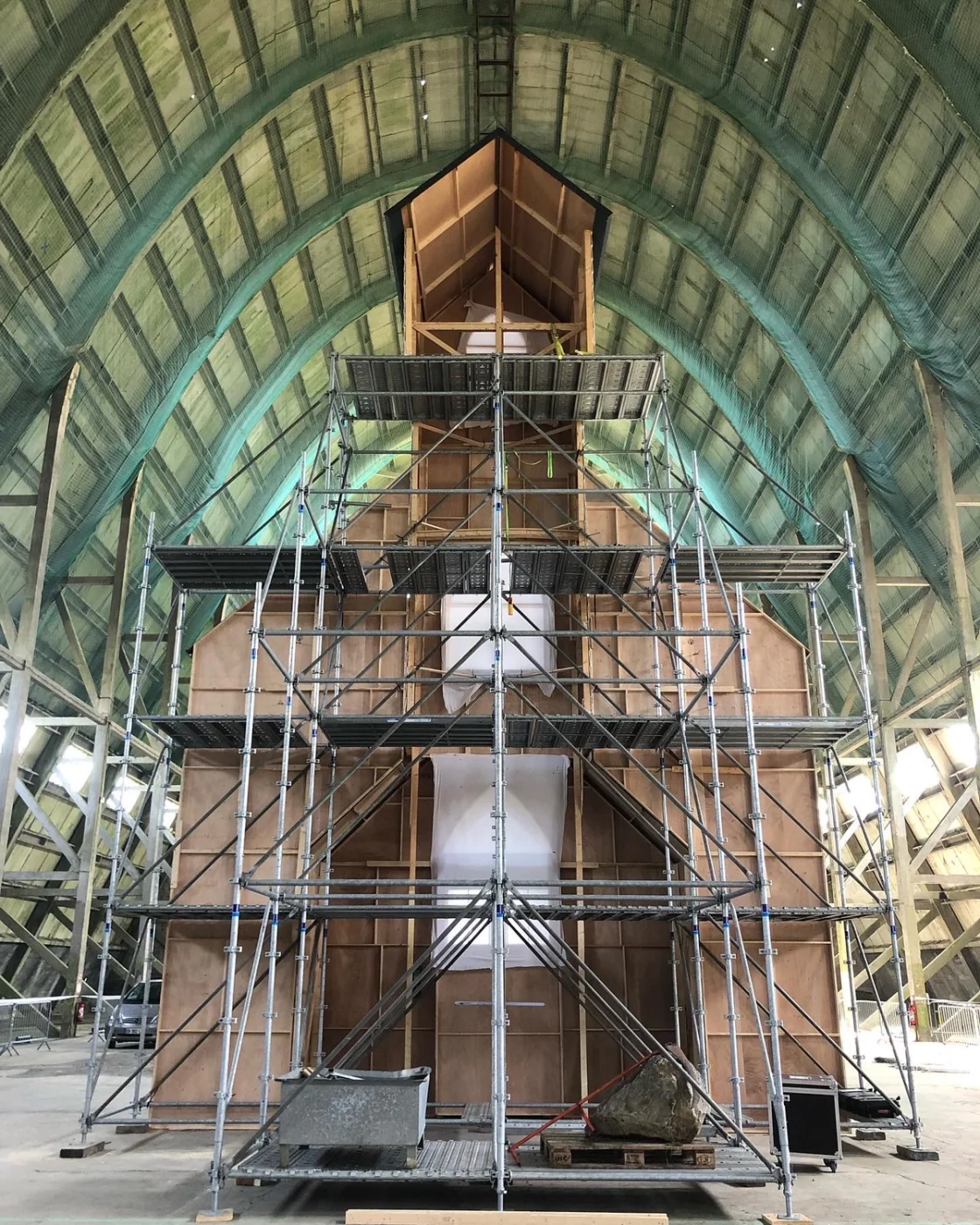
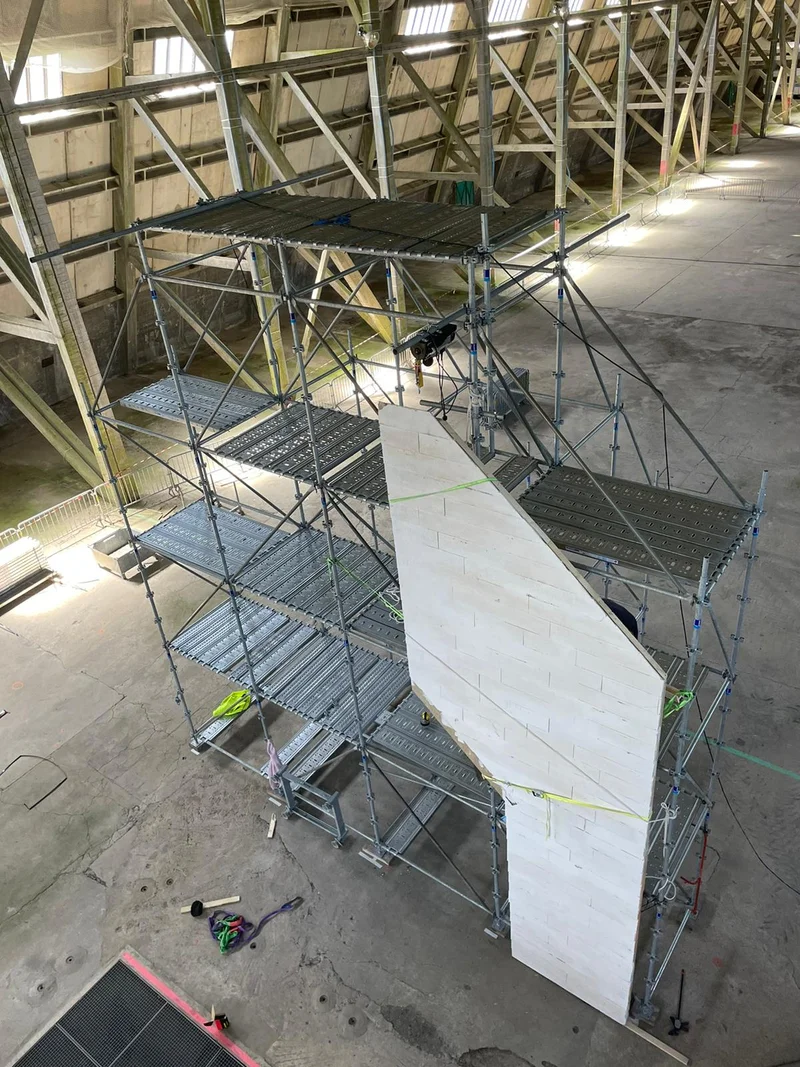
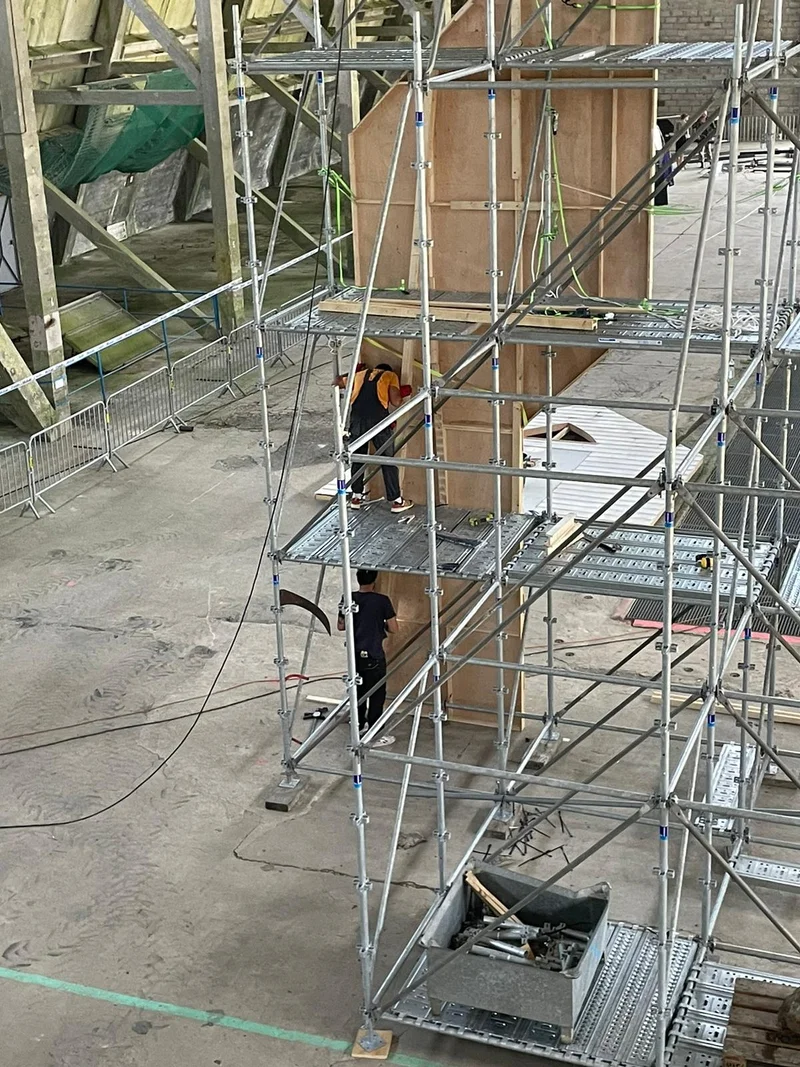

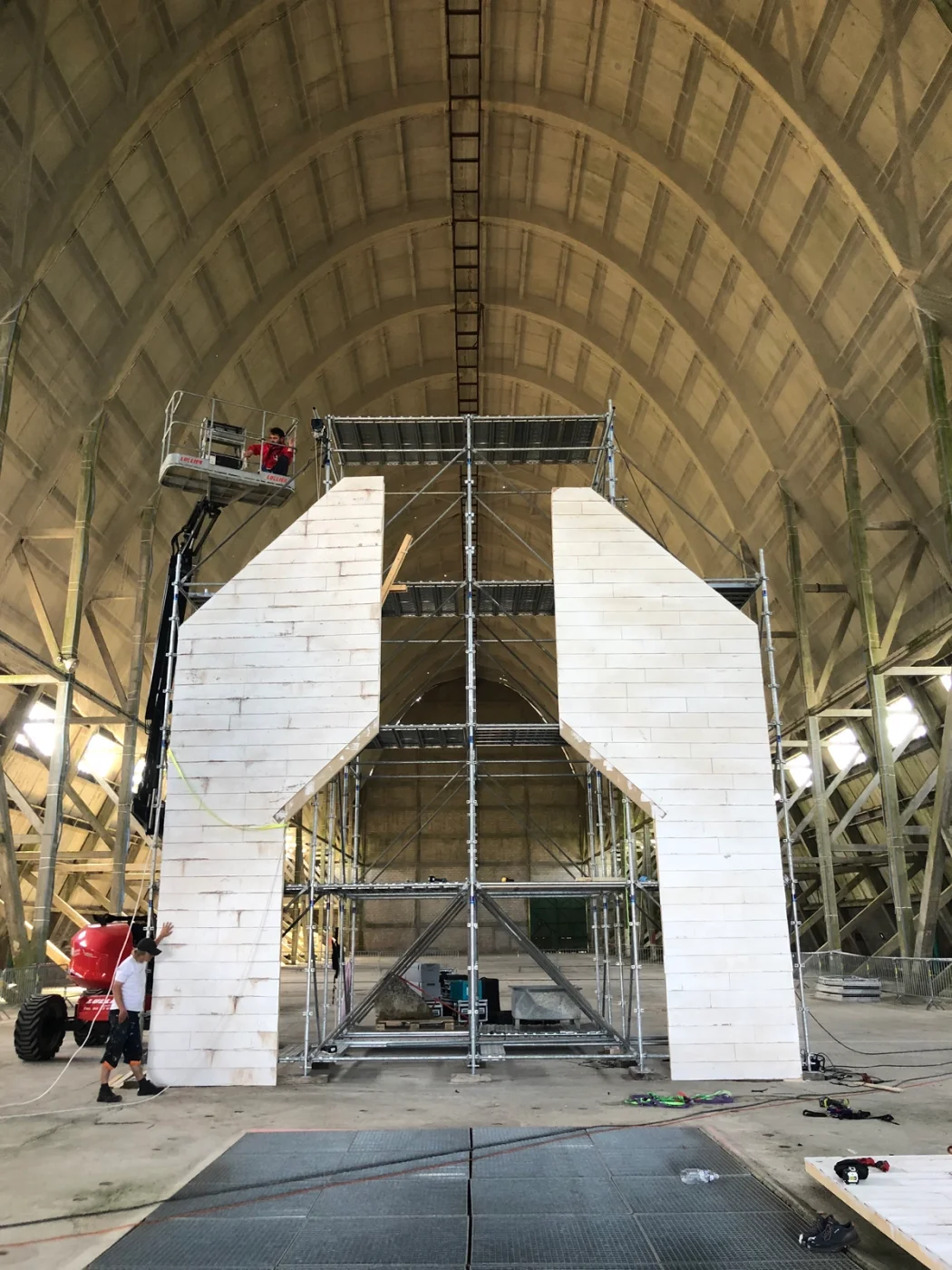
The installation was on view for two days during the festival, after which it was completely dismantled. The only remaining elements are the two devils that were featured on the façade.


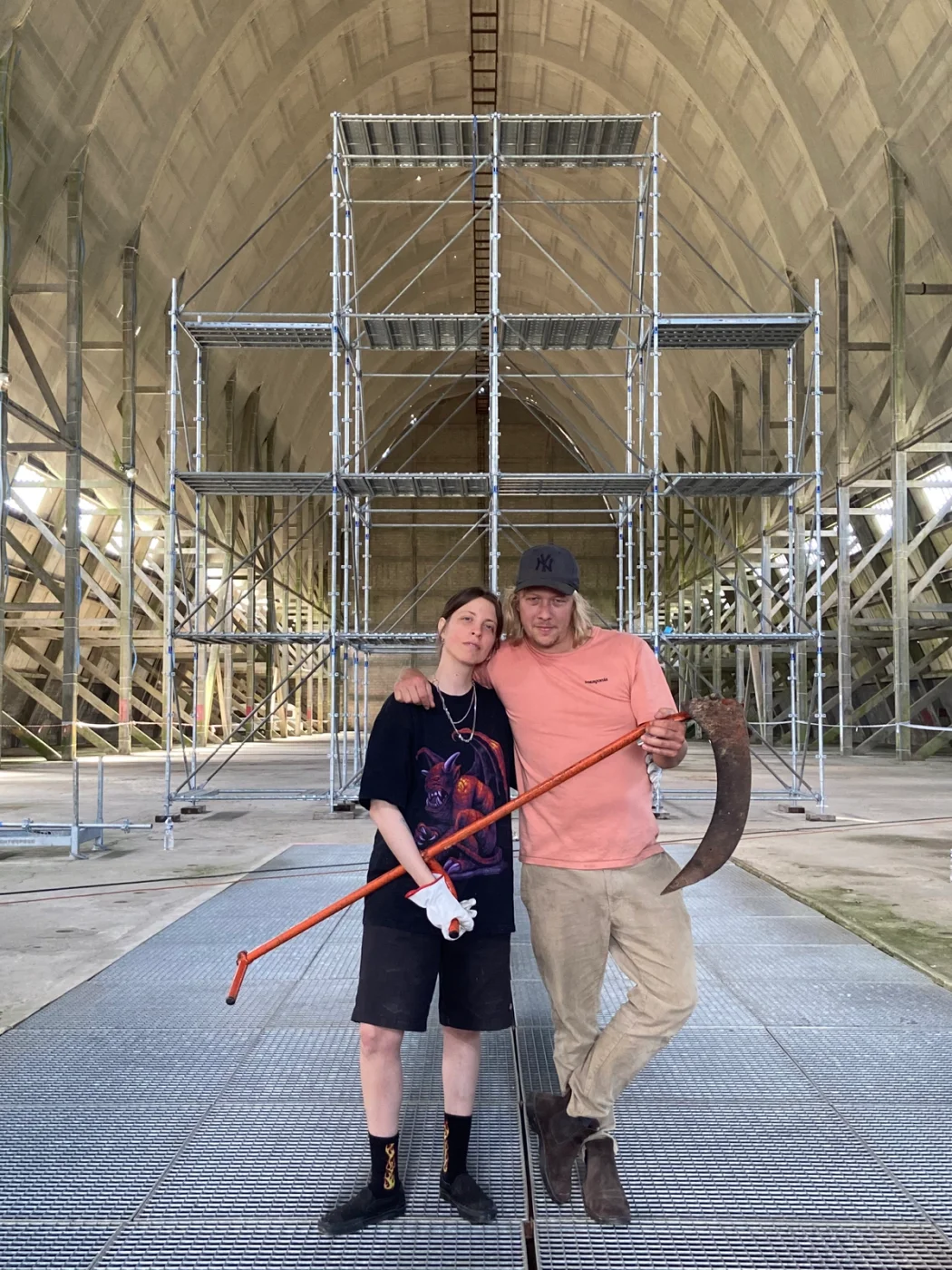


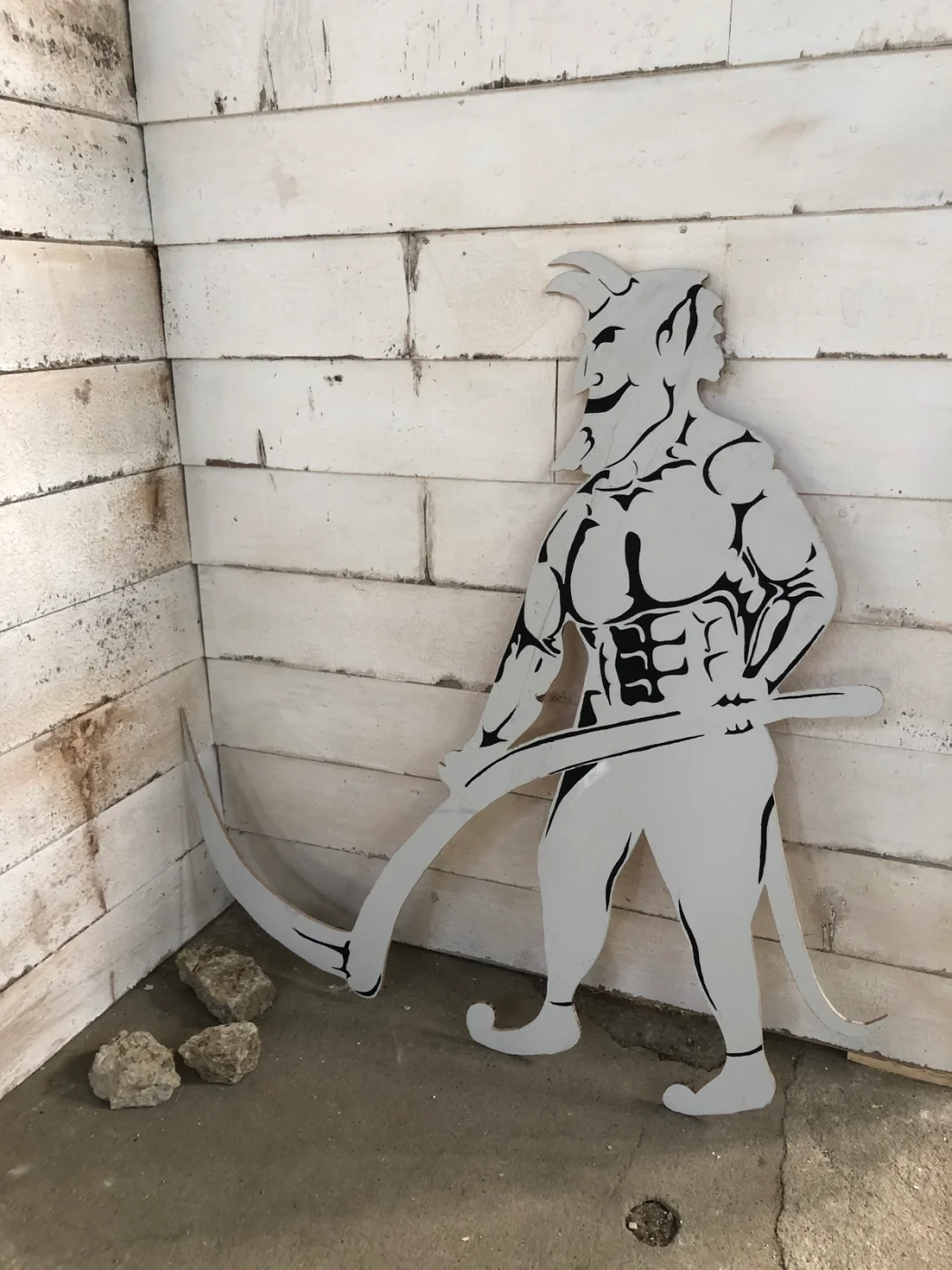
Merchandising
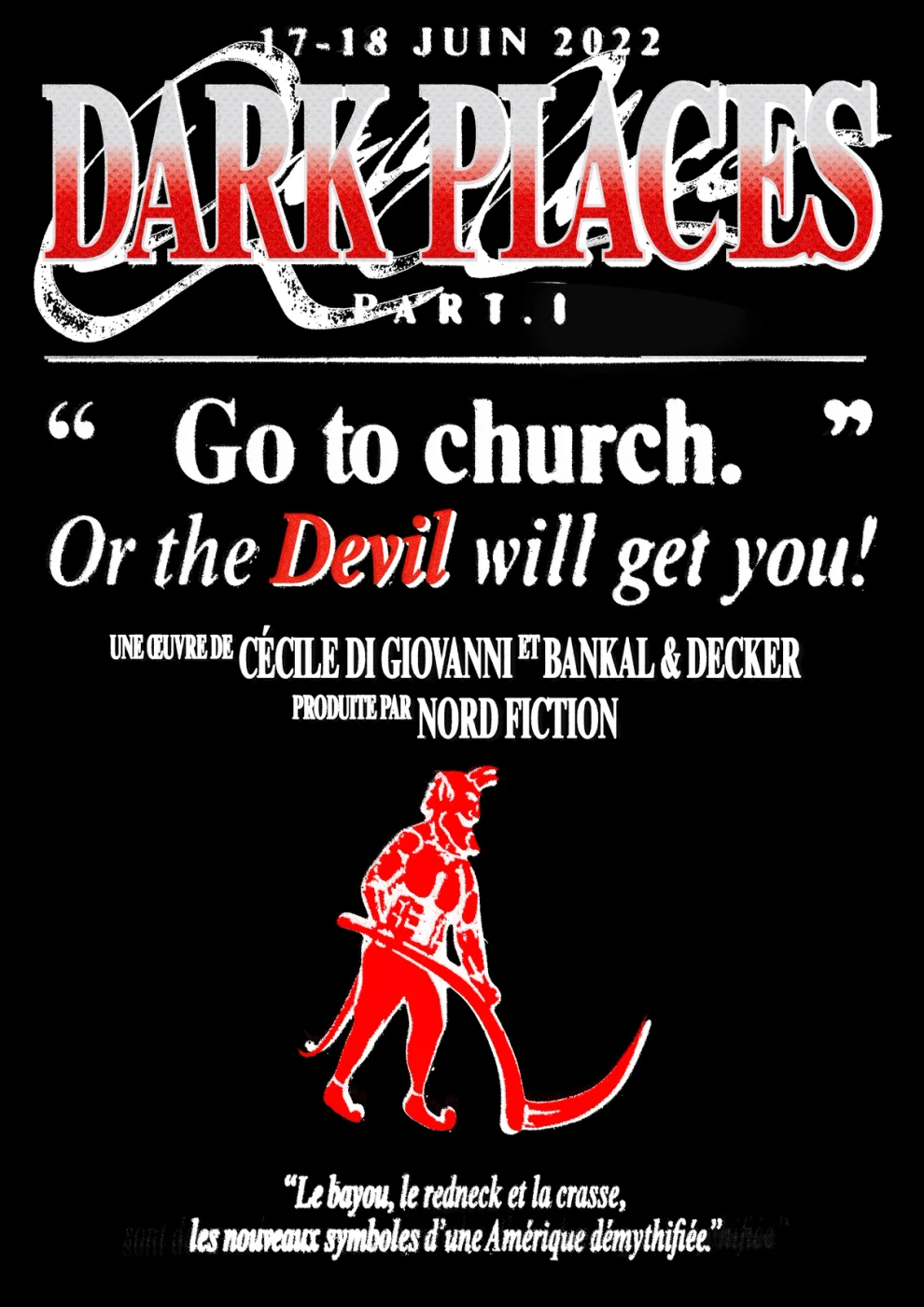
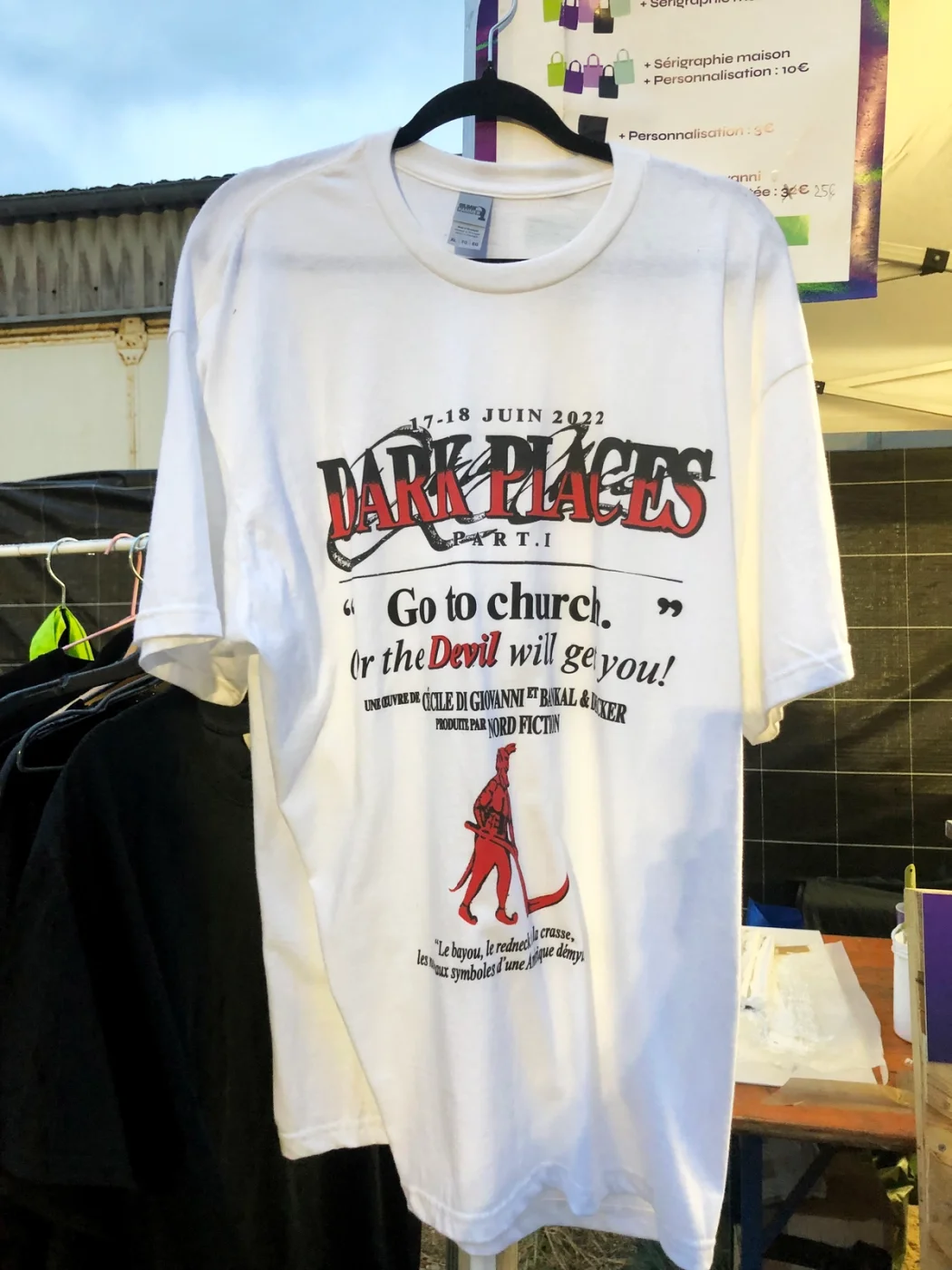
A poster and a T-shirt featuring the poster’s design were produced. The T-shirt was sold in a limited edition and only during the duration of the festival.
